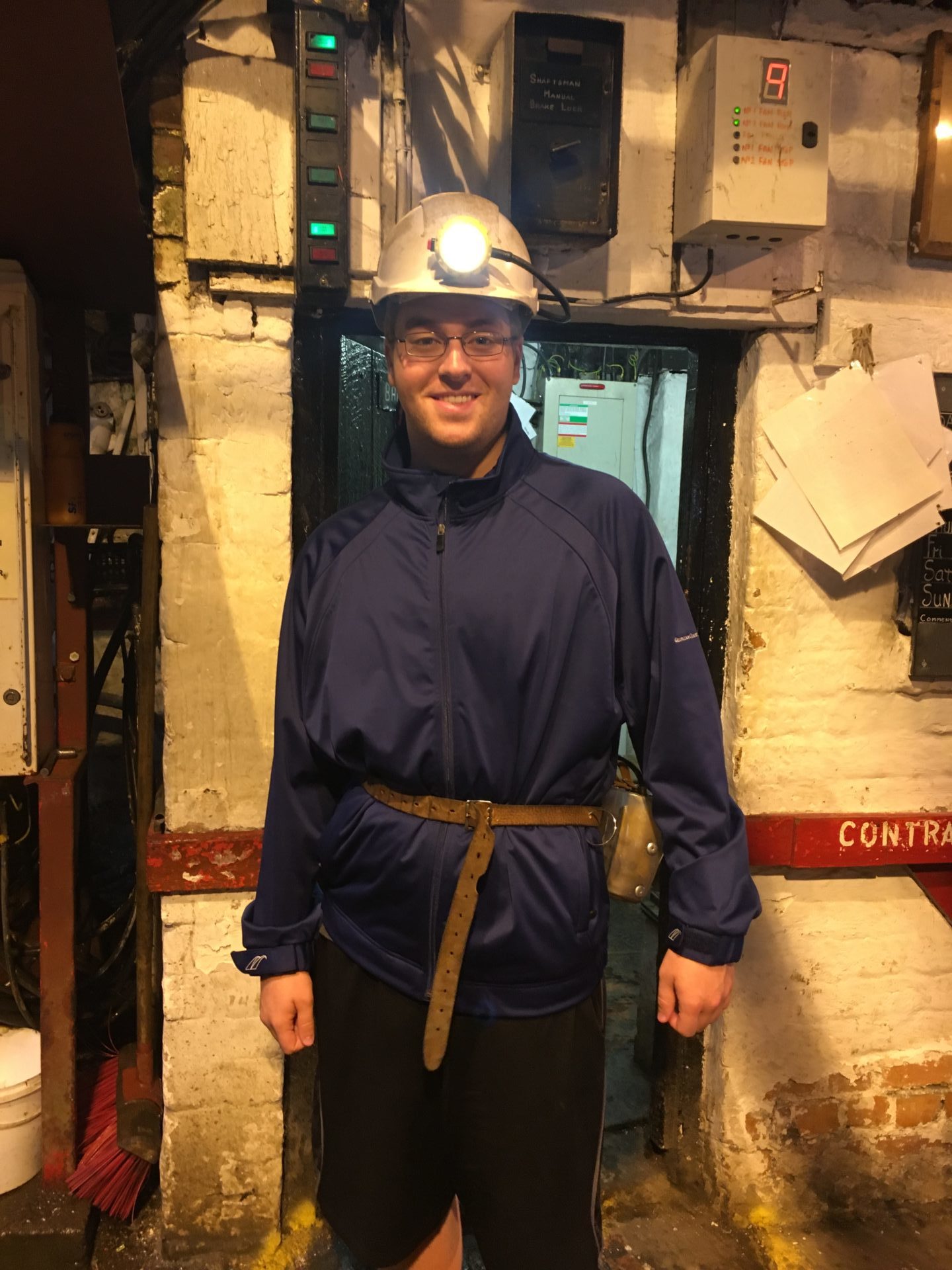From October 13-14th, I traveled to Wales where I explored many historical sites such as Tintern Abbey, Caerphilly Castle, and one of the last Welsh coal mines. I was part of a tour that was able to descend about ninety meters underground into the mines. We had to wear a helmet with a light on the top, like you would see in a movie, as well as an oxygen mask in case the chemical levels rose too high while we were down there. The mines and their inner workings, when they were open, was described by a former miner. The miner gave us a history of the mine and subjects ranging from the horses that were transported and lived underground to the children who were employed to open and close oxygen shielding doors.
One major piece of history not mentioned by the miner was Margaret Thatcher. Thatcher was the conservative Prime Minister for the UK from 1979-1990. Not only the first female prime minister in the UK, but a stark believer in conservative spending policies with economic aims: the control of inflation, mass privatization of state-owned industries, reduction of direct taxes with the increase in indirect taxes, and to limit the power of the unions. In the early 1980’s, the cost of paying the miners far outpaced the output of the mines. The Coal Authority released a graph detailing the fall in output with an extreme rise in employees. (See graph)
If the number of miners was to be taken out of the graph, one would see that the output was still gradually decreasing over the years with no large spikes in productivity. This was largely due to the “easy to reach” coal being used up and the process of getting the coal that was deeper underground was both more difficult and dangerous. Margaret Thatcher saw these falling numbers and, in order to decrease the massive deficit, ordered that a majority of the mines would be shut down.
Naturally, the miners, although aware of the failing and weakening of the industry, led by Arthur Scargill, pushed for a massive, nationwide strike. As leader of one of the coal unions, he decided to call for and thereby order a strike which, according to the policies of the miners, was against the rules. Nevertheless, the miners agreed, and a strike was carried out. Mrs. Thatcher was ready for the strike and, in anticipation, had stockpiled mass amounts of coal. The strikes lasted for a year until the unions conceded and Mrs. Thatcher was victorious. Her government used several methods to close the mines (i.e. pouring cement, using explosives to cause a collapse, etc.)
As a historian, I found this trip to be a fantastic learning experience. I was so lucky to have been abl e to go into the mines and see what the workers faced day in and day out. I went in knowing only Mrs. Thatcher’s arguments but came out with a stark contrast as I heard the perspective of the miners. I must say that, in the end, I do agree with Mrs. Thatcher’s decision as it made sense, but I would not have been able to come to this decision had I not visited and learned from the mines. My trip to Wales and my descent into the mines was one that I will never forget and one that I will teach my future students!
e to go into the mines and see what the workers faced day in and day out. I went in knowing only Mrs. Thatcher’s arguments but came out with a stark contrast as I heard the perspective of the miners. I must say that, in the end, I do agree with Mrs. Thatcher’s decision as it made sense, but I would not have been able to come to this decision had I not visited and learned from the mines. My trip to Wales and my descent into the mines was one that I will never forget and one that I will teach my future students!
-Danny Ginchereau

